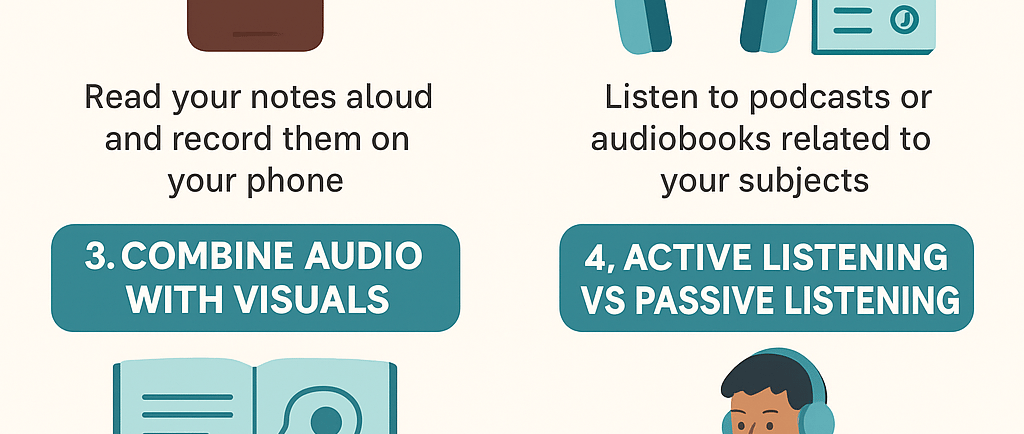How to Learn by Audio Learning


In today’s fast-paced world, students are constantly looking for smarter ways to study. While traditional methods like reading textbooks and writing notes are effective, many learners are now turning to audio learning as a powerful tool. Audio learning simply means learning through spoken content—whether it’s podcasts, recorded lectures, audiobooks, or your own voice notes. It is an excellent way to save time, improve memory, and make studying more flexible.
Why Audio Learning Works
Audio learning taps into our brain’s auditory memory. When you listen, your brain processes information differently than when you read. Many people find it easier to recall facts, examples, or explanations when they have “heard” them. This is why we often remember song lyrics even if we never tried to memorize them.
Steps to Learn Through Audio Effectively
1. Record Your Own Notes
One of the simplest ways to use audio learning is to record your own notes. Instead of reading chapters again and again, read them aloud and record them on your phone. Later, you can listen to these recordings while traveling, walking, or before sleeping. This creates multiple repetitions without extra effort.
2. Use Educational Podcasts and Audiobooks
There are thousands of free and paid podcasts and audiobooks available for subjects like science, history, and self-development. For NEET aspirants, for example, many teachers upload concept explanations in audio format. These resources allow you to learn anywhere—while commuting, exercising, or even doing chores.
3. Combine Audio with Visuals
Audio learning becomes even more powerful when combined with visuals. For example, you can listen to a recorded lecture while looking at diagrams in your textbook. This creates a dual memory link—both auditory and visual—making recall easier during exams.
4. Active Listening vs Passive Listening
There are two ways to use audio learning:
Active Listening: Sit in a quiet place, take notes, and pause the audio to reflect or answer questions.
Passive Listening: Play the audio in the background while doing light activities. This helps with subconscious reinforcement, especially for revision.
Using both methods together gives maximum benefit.
5. Repetition is the Key
The more often you listen, the better your memory becomes. Audio learning makes repetition easy—you can listen to the same recording multiple times without boredom. Repetition ensures long-term retention of important concepts.
6. Learn On-the-Go
One of the biggest advantages of audio learning is flexibility. You don’t need a desk or a book. Whether you’re walking to school, riding a bus, or lying in bed, you can turn these small pockets of time into productive study sessions.
Benefits of Audio Learning
Saves time by turning travel and free moments into study opportunities.
Improves memory through auditory reinforcement.
Reduces study fatigue by offering variety in learning methods.
Builds better focus and listening skills.
Final Thoughts
Audio learning is not meant to replace reading or writing completely, but it can add an extra layer of effectiveness to your study routine. By recording notes, listening to podcasts, and practicing repetition, students can make the most of their time and boost retention. If used wisely, audio learning can become your secret weapon for mastering concepts with less stress and more confidence.
